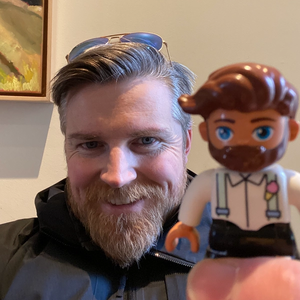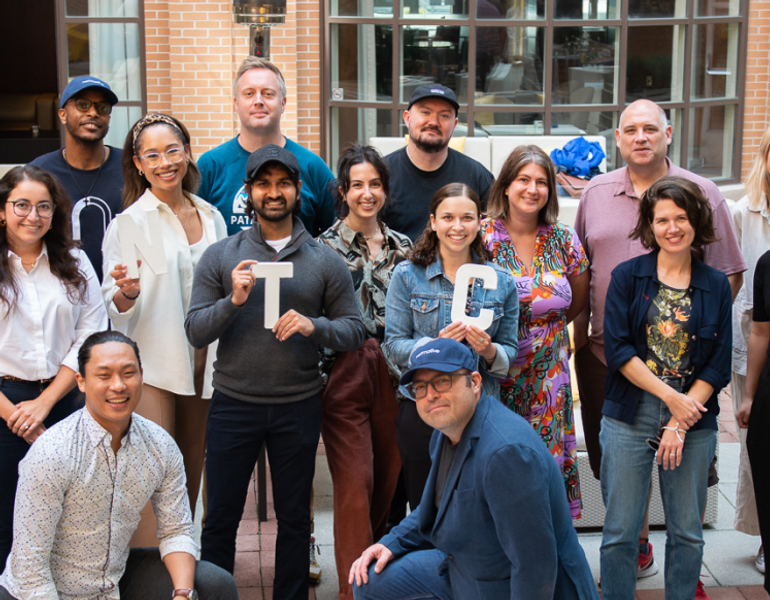Your Ideas are Getting Shot Down Because You’re Not Answering the Right Questions
We keep coming up with promising innovations. Decision-makers keep shooting them down. Did you ever think it might not be about your ideas?
You’ve been given a mandate to innovate. You’ve done your homework, researching your customers to understand their needs. You know what the competition is up to. You’ve landed on an idea. You’re ready to change the world as we know it.
And then you get shot down.
What happened? I followed the stage gates! I filled in the template. I told a great story. What did I miss?
Know the game
Like it or not, corporate innovation decision making is about far more than just your ideas. After years of working on large-scale innovation programs, the team at Normative has learned that the quality of your idea is only part of the equation. What gets produced (and approved) has as much to do with people, processes, and politics of your corporate environment than it does with the merit of your innovation.
Luckily, when you know the tendencies of corporate decision makers, you learn that there’s ways to get them the kind of data that helps them make good decisions. Let’s take a look at why innovations get killed - and what you can do to prevent their premature demise.
Why you’re hearing no
Any good innovator knows you need to appeal to the rational and the emotional needs of your audience. Here are a few of the questions you’re just not answering for your decision makers.
1. “Is there a market for this?” You’ve been working for months on an idea. It’s why you get up every morning. Your raison d’etre. For you, everything about the idea is crystal clear. But for someone who hasn’t lived and breathed it - it’s difficult to understand. What’s missing? Usually, it’s a crystal clear value proposition. In other words, you haven’t provided a really clear explanation why your market needs and will pay for your product. Is it solving a problem that has yet to be solved? Is it removing a significant pain point from their lives? Is the pain so great that they would be willing to spend money to relieve it? If you can’t say WHAT is it, WHO it’s for, and WHY they’ll care, then you’ve also provided no sound reason to get investment.
2. “Does this align with our corporate vision and mission?” Innovation teams often feel the tension of pulling away from a traditional business model or way of doing things. That “newness” can feel extremely threatening and confusing to the existing order and stability that makes people feel safe and secure within their traditional business models and roles. Decision makers are looking for “fit”, trying to ensure that any new innovation logically aligns with corporate strategy. It’s your job as the innovator to make it make sense within the organization’s purpose. To get buy-in, you need to demonstrate that your organization has a right to lead the change.
3. “Why should I be excited about this?” Our Entrepreneur in Residence starts every new program with one simple question - “What’s their goal?”. To say that differently, your decision maker’s have KPIs that they’re expected to deliver on, and their ability to hit their targets that influences their decision making. Your idea may be brilliant, but it’s your ability to clearly tell a story that connects the idea to their objectives that helps you ensure you’ve got buy-in. Undertaking something new can either seem like a distraction, or a more effective way to do more. You need to craft a narrative that inspires people to support you.
4. “Why is this not risky?” Innovation by definition is about doing something different to remain relevant. But doing something different presents risk, which is the enemy of decision making. It’s your job as the innovator to systematically present an argument that de-risks the process of taking on something new, while at the same time presenting a story of why moving forward with minimal risk is more valuable than staying in the same place you are today. Is that a tricky tightrope walk? Yes, but you’ve done the research and found the customer. You’ve validated the idea with enough customers and stakeholders to justify the investment. You have the data, and all you need to do is share it.
5. “What are the financial requirements for a successful implementation?” Many business cultures are fixated on “the business case” as a tool to support decision making. While that blue-sky, finger in the air estimation of growth may be a standard stage-gate in classic corporate innovation, we know from experience that it takes pro-forma development to force yourself to think through the practical strategy, marketing, and growth implications required to move on a new innovation.
It’s all about managing the perception of risk
The corporate mindset is one of risk management and profit maximization, so when that mindset sees a truly innovative idea, one that does not fit its expectations and challenges conventions, the knee-jerk reaction is to find reasons not to pursue it. It’s a natural response.
Normative’s evidence-driven approach to innovation provides the reassurance necessary to move past that instinct and support a successful market launch. Our evidence-driven approach to innovation, based on progressive levels of validation with potential customers and stakeholders, provides the data needed to create a compelling narrative for why the innovation should be pursued. Our unique commitment to customer development as well as product development ensures that the value proposition is strong enough and clear enough that people will have a reason to pay for it.
What questions do you think need to be answered to get the green light?




